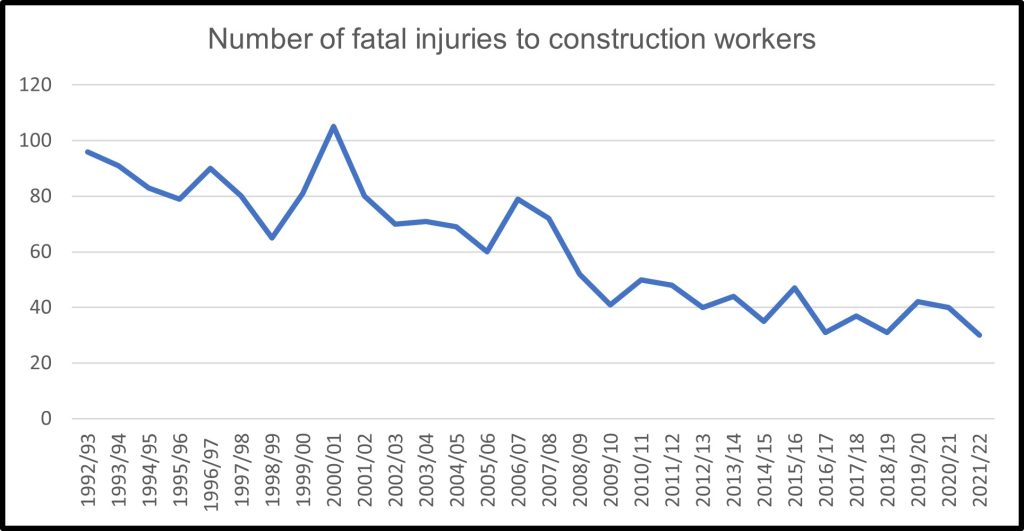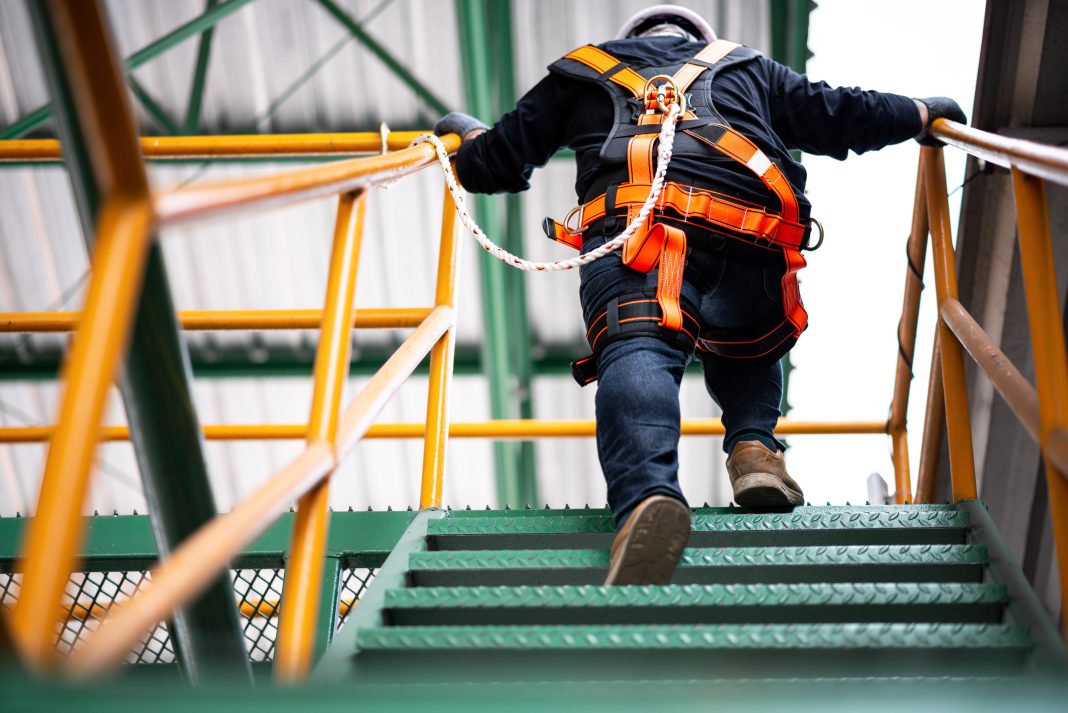On the 20th anniversary of World Day for Safety and Health at Work, interim CEO of the ECITB Andy Brown asks how we can ensure a zero harm legacy for the sector
Establishing a zero harm legacy may seem like a tall task for the engineering construction industry (ECI)- but it will only happen by involving site owners, contractors and the workers deployed onsite.
Over 200 people are killed in the UK each year in accidents at work. One million people are injured and more than two million suffer illnesses caused by, or made worse by, their work.
Construction workers face a much higher risk of work related injury
The latest HSE report into work-related fatalities showed the fatal injury rate for the construction sector* is 1.47 per 100,000 workers (HSE does not distinguish between the ECI and the general construction sector).
This is around four times the rate for all industries, three times higher than the utilities sector and almost double the rate in transportation and storage and manufacturing workers.
The accident rate in engineering construction is lower than in the broader construction industry, however, the fact remains that, as an industry, we have not achieved ‘zero harm’.
So, preventing accidents and ill health caused by work should be a key priority for everyone. And this is where training is so vitally important.
How has the ECITB worked towards a zero harm legacy?
The ECITB launched its CCNSG (Client Contractor National Safety Group) Safety Passport back in 1993 to give workers enhanced health and safety awareness through a quality-assured delivery process. The CCNSG Passport is delivered through face-to-face training, delegate discussion and shared experience followed by a knowledge test.
The good news is the number of fatalities and injuries since this was introduced has steadily reduced. The reduction in fatalities cannot be wholly attributed to this one safety training programme but the CCNSG was a trailblazer for quality safety training across the industry.

Nevertheless, there were 30 work-related deaths in the construction sector in the last reporting window.
Reducing mandated training reduces safety
So, how important is this safety training to asset owners and their contractors? Is the delivery of quality-assured discursive training worth the additional cost or is compliance training of any sort sufficient?
It varies across the industry.
Some asset (or site) owners provide funding to contractors for training staff. This ensures workers get the quality training they need for things like working at height, confined space and site safety.
But we are seeing an increase in this element being cut.
Reducing or even completely removing any margin for mandatory training from the contractor rates encourages a behaviour of minimal investment in vitally important courses.
These courses develop knowledge and understanding through training and shared experience. It’s training that ultimately saves lives.
Fortunately, in the ECI many of the contractors take this seriously and, regardless of the asset owner rates, they invest in this safety training.
As the workforce grows, training must adapt to maintain safety standards
But there is a risk that, as margins are tight, short cuts will be made. And with the increased number of new entrants needed to address the skills shortages, this increases the risk of safety incidents.
We need to change any trending culture so that asset owners take responsibility for safety on their sites. It makes moral, legal and economic sense.
The law requires organisations to provide whatever information, instruction and training is needed to ensure, so far as is reasonably practicable, the health and safety of their employees.
Passport schemes for health and safety help employers check that everybody working on their premises, or elsewhere doing work on their behalf, has received basic health and safety awareness training.
You need to be clear about what a particular health and safety passport held by a worker tells you – and whether the training and awareness the passport represents, is compatible with the work the passport holder is doing and the environment they are working in.
ECITB’s CCNSG Safety Passport helps contractors reduce risk
The CCNSG Safety Passport provides information and training that helps you to:
- Ensure you or your staff are not injured or made ill by the work you do
- Develop a positive health & safety culture, where safe & healthy working becomes second nature to everyone
- Meet your legal duty to protect the health & safety of yourself and others
Effective training to achieve a CCNSG Passport will:
- Contribute towards making employees competent in health and safety
- Help businesses avoid the distress that accidents and ill health cause
- Help avoid the financial costs of accidents and occupational ill health
The average number of fatal injuries in the construction sector has fallen since 1993 thanks to health and safety training, like the ECITB’s CCNSG Safety Passport.
To create a zero harm legacy, we cannot be complacent
A cost-driven approach to training from site owners risks these fatality statistics heading back up.
Organisations across the ECI must ensure their workers hold the requisite skills and knowledge through quality-assured training to continue to reduce the number of work-related fatalities and injuries in our sector.
Site owners should both support and mandate nationally recognised schemes, like the CCNSG, to ensure these workers receive the high quality of training they need while ensuring the transferability of personnel both within the sector and across the wider industry.
As we strive towards Net Zero we must work towards a zero harm legacy. Anything else will tarnish the achievement of the energy transition. Safety training saves lives. Priority MUST be given to protecting the workforce.














